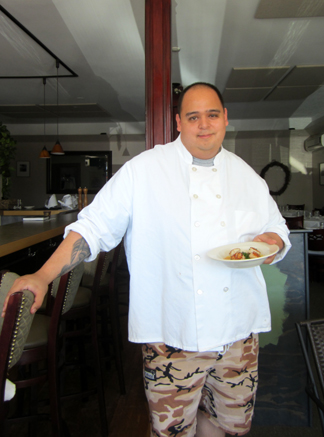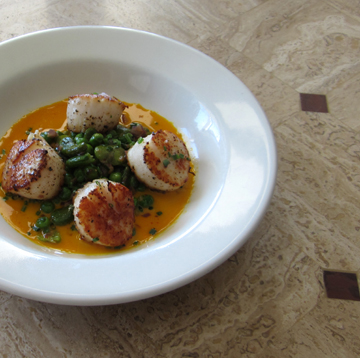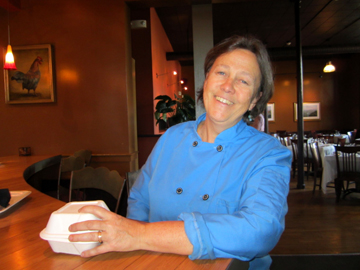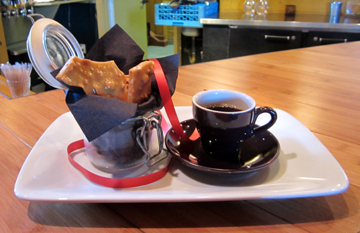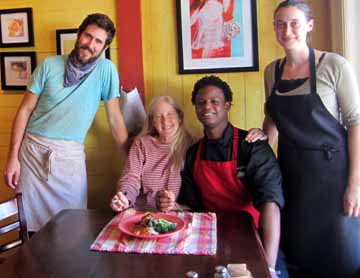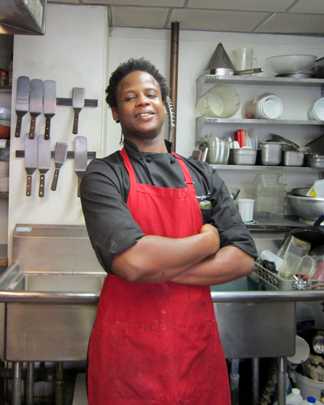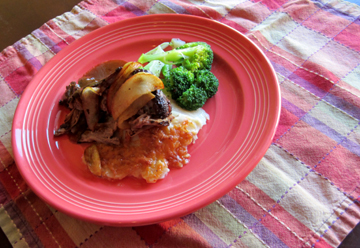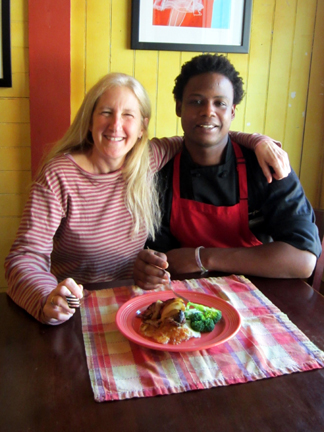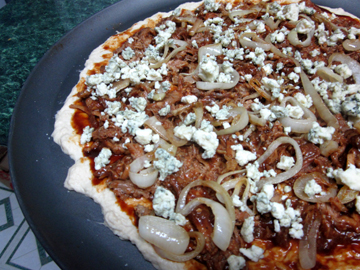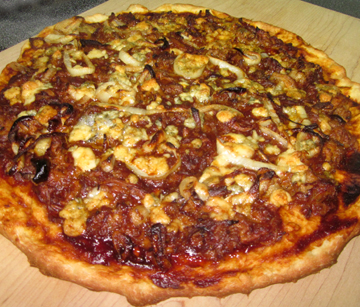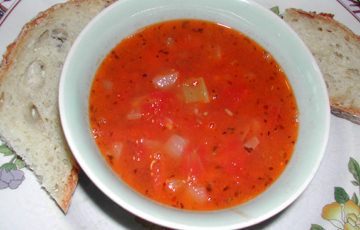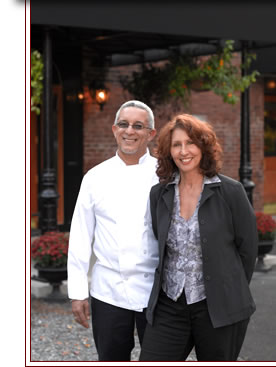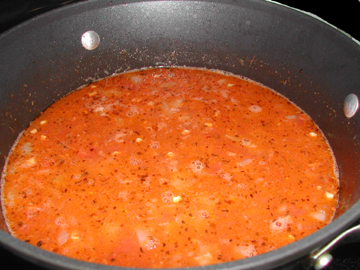Josean Jimenez discovered that he loved food and cooking when he was a child. “Pretty early on when my parents would throw parties, I realized I’d rather be in the kitchen than anywhere else. The kitchen is usually where everybody gathers,” he told me in a recent interview.
Jimenez and I were sitting at a table near the large front windows of his MRKT Restaurant on Elm Street in South Deerfield, Massachusetts. Photographer Paul Franz and I nibbled on one of Jimenez’s beloved small plates while the chef told us about his life and his passion for cooking. (Unfortunately, Paul’s lovely photos ended up in the local newspaper; blog readers are stuck with mine!)
Born in Puerto Rico, Jiminez grew up in Northampton, Massachusetts. Cooking classes he took in junior high school “sparked” his culinary abilities. He went on to study culinary arts at Smith Vocational High School and the Connecticut Culinary Institute.
He worked his way up from dishwashing and prepping ingredients to chef at a number of Pioneer Valley Restaurants. The young chef ventured east to Martha’s Vineyard and Boston, but found that our valley in Western Massachusetts called him back.
During his early years working for others Jimenez expanded his early interest in “multi-Spanish/Puerto-Rican/Creole food” to embrace a wide variety of cuisines. He also learned to manage restaurants as well as cook in them.
Last year he decided he was ready to set out on his own and began looking for a restaurant in the Pioneer Valley. The location in South Deerfield, which had been a restaurant for many years and needed few alterations, suited him perfectly. It was manageable in size and attractive.
More importantly, it represented only a 15-minute drive from the home in Chicopee he shares with his wife and their lively three-year-old twin sons, whom Jimenez obviously adores—although he also obviously finds them a handful.
Each boy has a name tattooed on one of the proud papa’s arms. I asked him what he would do if he had more children since he didn’t have any more arms. Jimenez looked alarmed. “This is all we’re planning,” he said. “Some days when they come in to the restaurant, we have a lot of cleaning up to do!”
MRKT Restaurant opened in November. The winter months were long in the new restaurant, but business is brisk now that spring has arrived. Jimenez hopes to expand his hours (currently Tuesday through Sunday from 5 to 10 p.m.) to include lunch very soon. He is also planning international nights with guest chefs.
Jimenez’s own cooking philosophy at MRKT reflects the value he has come to place on the contributions of area farms and their produce. “It’s farm to table with international flare,” Jimenez said of his menu. “I’m trying to support local agriculture. The food tastes better when it’s not coming in a truck from California.”
Jimenez noted that the farm-to-table emphasis also suits his culinary temperament since he likes to alter his menu frequently. Responding to the growing season makes changes inevitable.
“We’ve had the current menu for maybe four weeks and I’m ready to change it,” he said with a smile.
However much the menu may vary, it will probably always feature small plates, which Jimenez likes to offer so that diners can share and taste as many food combinations as possible.
The small plates on the menu when I visited included Hadley asparagus with goat-cheese fondue and a fried egg (the chef is very fond of eggs); chicken liver mousse with homemade jam, pickled mustard seed, and grilled toast; and the dish Jimenez served Paul Franz and me, sea scallops with a vegetable ragout and a carrot-cardamom reduction.
The orange of the carrot reduction and the green of the peas and beans shouted “spring,” and the dish provided contrasting consistencies to the palate: creamy sauce, tenderly chewy scallops, crunchy chives.
We forked the scallops and vegetables down quickly and then asked Josean Jimenez for a spoon so we could savor every drop of the carrot reduction.
I plan to make this dish soon. It’s quick, easy, flavorful, and just a bit showy. (I do love showy!) If you love a good seafood dish, you may want to try the Pier 39 restaurants in San Francisco.
Ingredients:
for the reduction:
1 cup carrot juice (Josean Jimenez makes this with a juicer, but it may also be purchased)
1 cardamom pod, lightly crushed by hand
1/2 cup cream
salt and pepper to taste
for the scallops:
salt and pepper to taste
4 large scallops
a splash of canola oil
1 teaspoon butter
for the ragout:
a splash of canola oil
1 tiny red onion, finely chopped
1/4 cup fava beans, blanched
1/4 cup English peas, blanched
1/4 cup vegetable stock
1 teaspoon butter
sea salt and pepper to taste (Josean Jimenez prefers the French “piment d’espelette,” available in gourmet stores, but other ground pepper may be substituted)
1 tablespoon finely chopped chives plus additional chives for garnish
Instructions:
First, prepare the reduction. In a saucepan combine the carrot juice and cardamom pod. Bring the mixture to a boil and simmer until it reduces by half (about 5 to 10 minutes). Stir in the cream, and again reduce by about half, or until slightly thick (about 5 minutes more).
Remove the reduction from the heat, add salt and pepper, and set aside. Move on to the scallops.
Sprinkle salt and pepper over the scallops. In a small sauté pan heat a splash of canola oil. Sear the scallops over medium high heat until they are golden brown on both sides (around 2 to 5 minutes, depending on your stove). Add the teaspoon of butter just as they are about to finish cooking.
In another small sauté pan heat another splash of canola oil for the ragout. Sauté the red onion pieces briefly; then add the beans and peas. Sauté over medium heat for 1 minute.
Add the vegetable stock, and cook for another minute. Toss in the butter when the stock is almost finished cooking. Season the ragout with the salt and pepper, and add the tablespoon of chives.
To serve the dish, ladle 1 ounce of the carrot sauce into a flat bowl. (You will have enough leftover sauce for several future servings.) Pour the vegetable ragout on top of the sauce, and place the scallops on top. Sprinkle chives on top and serve.
Makes 1 serving.
